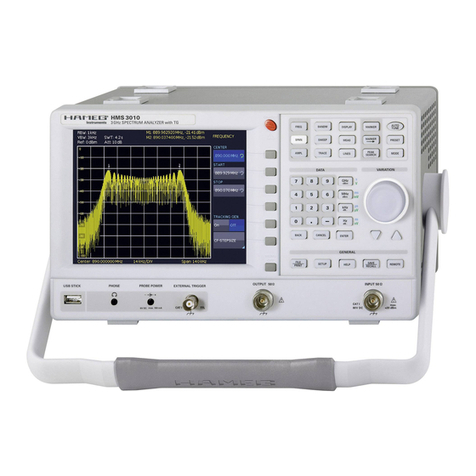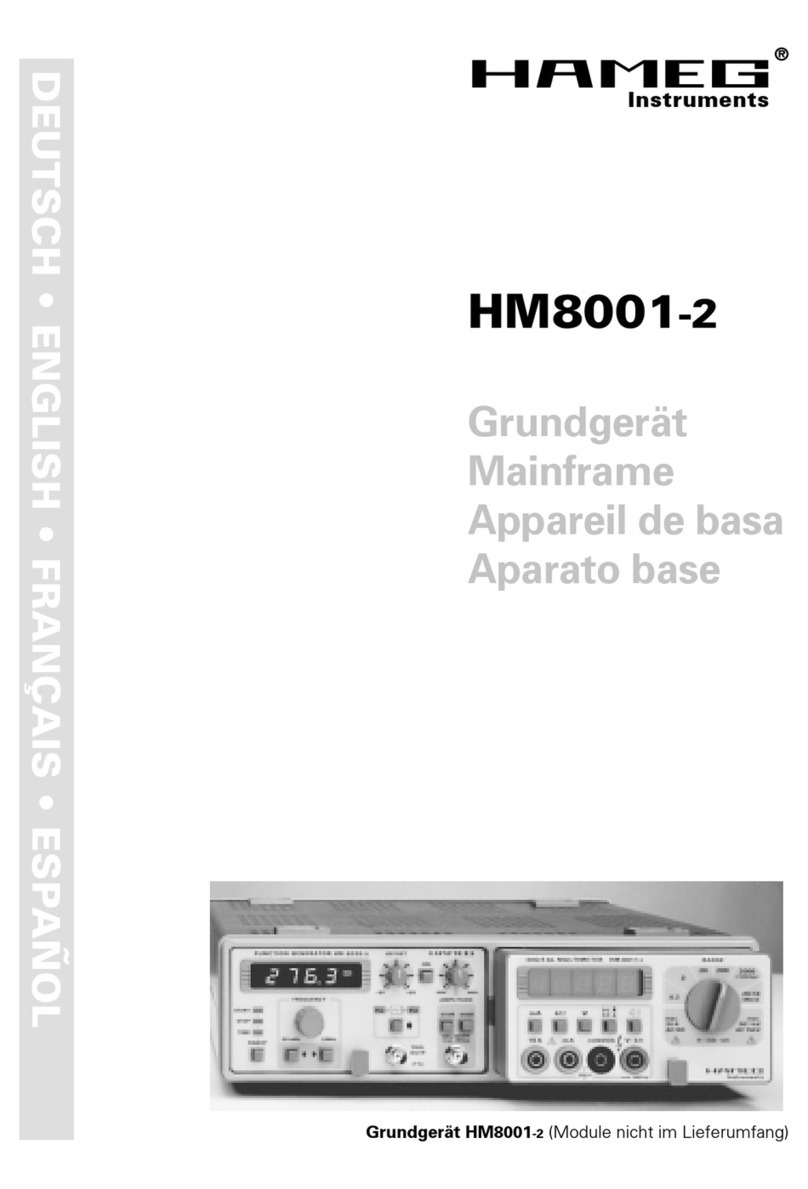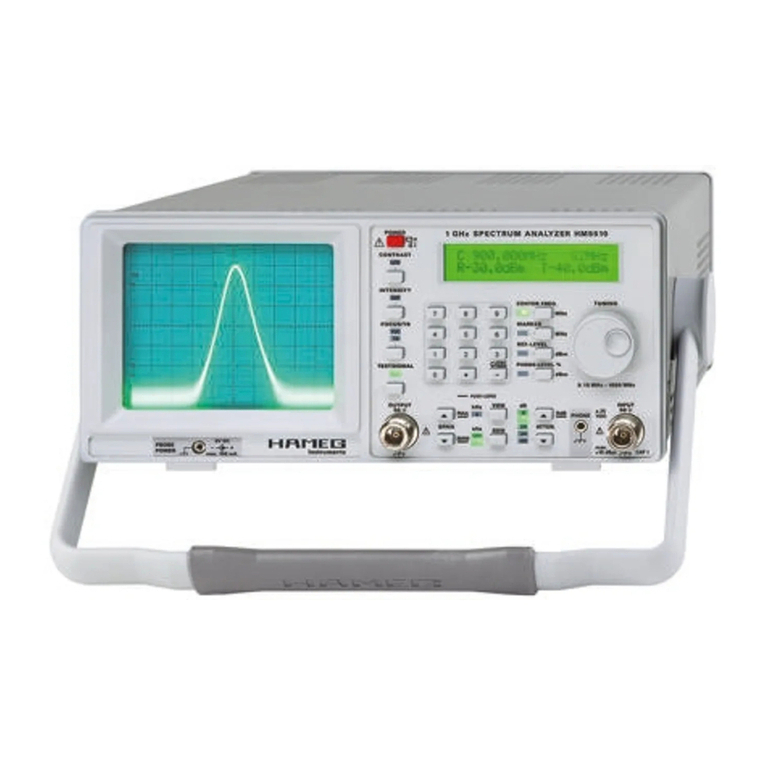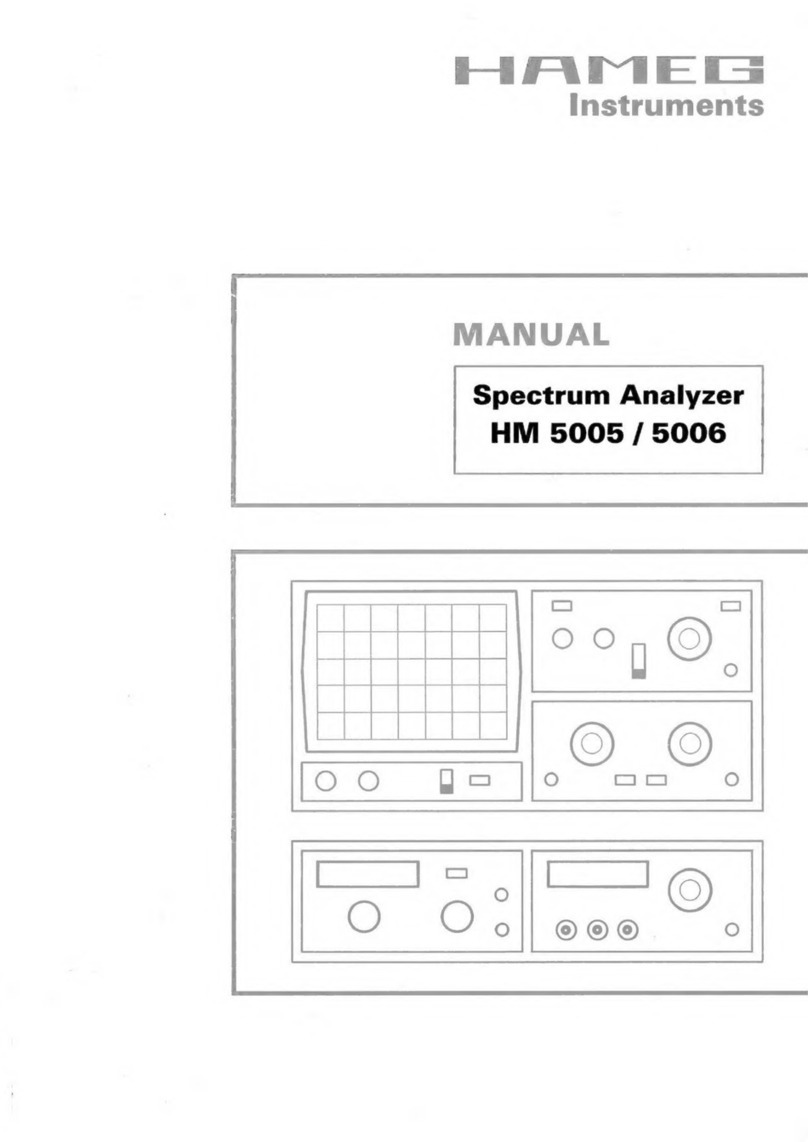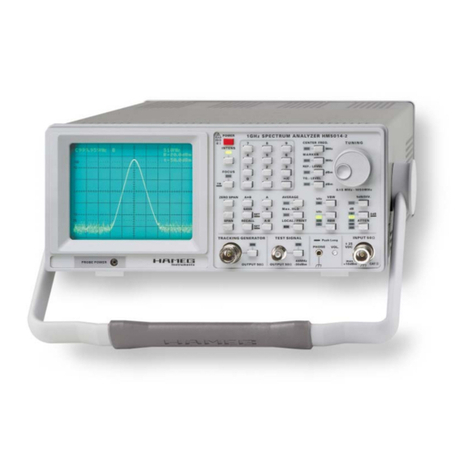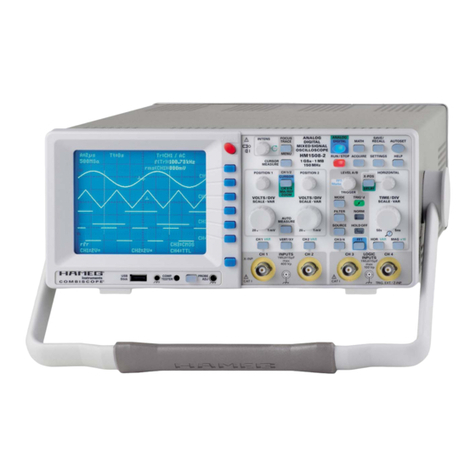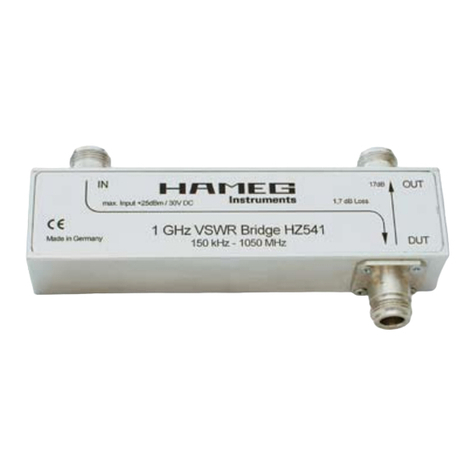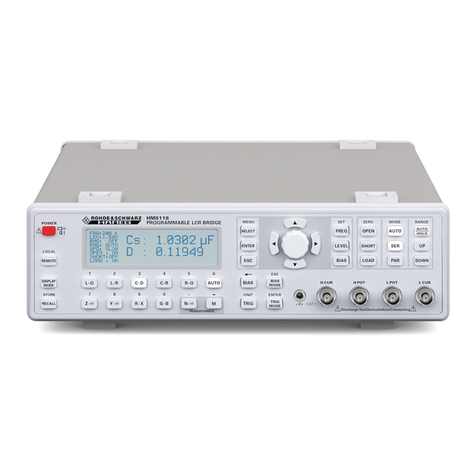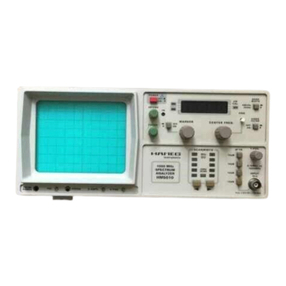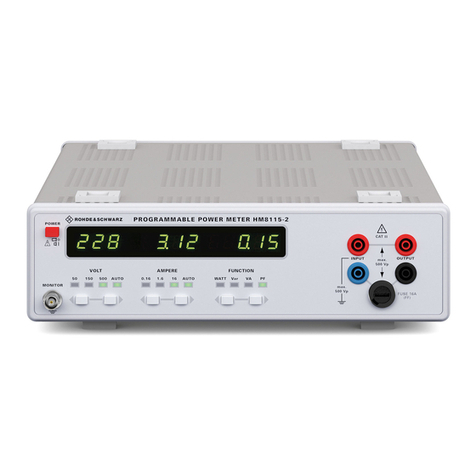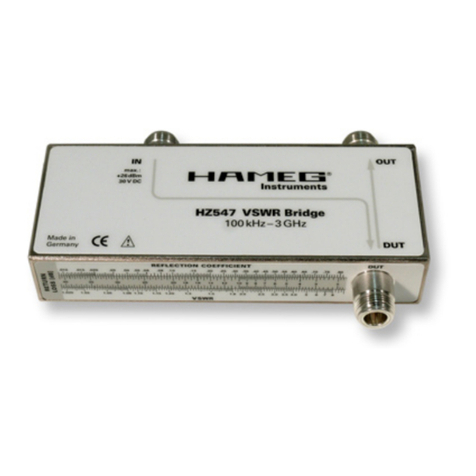
7
Sous réserve de modifications / Reservado el derecho de modificación
Allgemeine Hinweise
HAMEG Module sind normalerweise nur in Ver-
bindung mit dem Grundgerät HM8001 verwend-
bar. Für den Einbau in andere Systeme ist dar-
auf zu achten, daßdie Module nur mit den in
den technischen Daten spezifizierten Versorgungs-
spannungen betrieben werden. Nach dem Aus-
packen sollte das Gerät auf mechanische Be-
schädigungen und lose Teile im Innern überprüft
werden. Falls ein Transportschaden vorliegt, ist
sofort der Lieferant zu informieren. Das Gerät
darf dann nicht in Betrieb gesetzt werden.
Sicherheit
Dieses Gerät ist gemäß VDE 0411 Teil 1,
Sicherheitsbestimmungen für elektrische
Meß-, Steuer-, Regel- und Laborgeräte, gebaut
und geprüft und hat das Werk in sicherheits-
technisch einwandfreiem Zustand verlassen.
Es entspricht damit auch den Bestimmungen
der europäischen Norm EN 61010-1 bzw. der
internationalen Norm IEC 1010-1. Den Bestim-
mungen der Schutzklasse I entsprechend sind
alle Gehäuse- und Chassisteile mit dem Netz-
schutzleiter verbunden.(Für Module gilt dies nur
in Verbindung mit dem Grundgerät). Modul und
Grundgerät dürfen nur an vorschriftsmäßigen
Schutzkontaktsteckdosen betrieben werden.
Das Auftrennen der Schutzkontaktverbin-
dung innerhalb oder außerhalb der Einheit
ist unzulässig.
Wenn anzunehmen ist, daßein gefahrloser Be-
trieb nicht mehr möglich ist, so ist das Gerät
außer Betrieb zu setzen und gegen unabsichtli-
chen Betrieb zu sichern. Diese Annahme ist be-
rechtigt,
•wenn das Gerät sichtbare Beschädigungen
aufweist
•wenn das Gerät lose Teile enthält,
•wenn das Gerät nicht mehr arbeitet,
•nach längerer Lagerung unter ungünstigen
Verhältnissen (z.B. im Freien oder in feuchten
Räumen).
Beim Öffnen oder Schließen des Gehäuses
mußdas Gerät von allen Spannungsquellen
getrennt sein.
Wenn danach eine Messung oder ein Abgleich
am geöffneten Gerät unter Spannung unver-
meidlich ist, so darf dies nur durch eine Fach-
kraft geschehen, die mit den damit verbunde-
nen Gefahren vertraut ist.
Verwendete Symbole auf dem Gerät
Achtung - Bedienungsanleitung
beobahten
Vorsicht Hochspannung
Erdanschluß
Garantie
Jedes Gerät durchläuft vor dem Verlassen der Pro-
duktion einen Qualitätstest mit etwa 24stündigem
,,Burn In”. Im intermittierenden Betrieb wird dabei
fast jeder Frühausfall erkannt. Dennoch ist es mög-
lich, daßein Bauteil erst nach längerem Betrieb aus-
fällt. Daher wird auf alle HAMEG-Produkte eine
Funktionsgarantie von 2 Jahren gewährt. Voraus-
setzung ist, daßim Gerät keine Veränderungen vor-
genommen wurden. Für Versendungen per Post,
Bahn oder Spedition wird empfohlen, die Original-
verpackung aufzubewahren. Transportschäden sind
vom Garantieanspruch ausgeschlossen.
Bei Beanstandungen sollte man am Gehäuse
des Gerätes einen Zettel mit dem stichwortartig
beschriebenen Fehler anbringen. Wenn auf die-
sem auch der Name bzw. die Telefonnummer
des Absenders steht, dient dies der beschleu-
nigten Abwicklung.
Servicehinweise und Wartung
Verschiedene wichtige Eigenschaften der Meß-
geräte sollten in gewissen Zeitabständen genau
überprüft werden. Dazu dienen die im Funktions-
test und Abgleichplan des Manuals gegebenen
Hinweise.
Löst man die beiden Schrauben am Gehäuse-
Rückdeckel des Grundgerätes HM8001, kann der
Gehäusemantel nach hinten abgezogen werden.
Beim späteren Schließen des Gerätes ist dar-
auf zu achten, daßsich der Gehäusemantel an
allen Seiten richtig unter den Rand des Front-
und Rückdeckels schiebt.
Durch Lösen der beiden Schrauben an der Mo-
dul-Rückseite, lassen sich beide Chassisdeckel
entfernen. Beim späteren Schließen müssen die
Führungsnuten richtig in das Frontchassis ein-
rasten.
Betriebsbedingungen
Der zulässige Umgebungstemperaturbereich
während des Betriebes reicht von +10°C...+40°C.
Während der Lagerung oder des Transports darf
die Temperatur zwischen -40°C und +70°C be-
tragen. Hat sich während des Transports oder
der Lagerung Kondenswasser gebildet, mußdas
Gerät ca. 2 Stunden akklimatisiert werden, be-
vor es in Betrieb genommen wird. Die Geräte
sind zum Gebrauch in sauberen, trockenen Räu-
men bestimmt. Sie dürfen nicht bei besonders
großem Staub- bzw. Feuchtigkeitsgehalt der
Luft, bei Explosionsgefahr sowie bei aggressi-
ver chemischer Einwirkung betrieben werden.
Die Betriebslage ist beliebig. Eine ausreichende
Luftzirkulation (Konvektionskühlung) ist jedoch
zu gewährleisten. Bei Dauerbetrieb ist folglich
eine horizontale oder schräge Betriebslage (Auf-
stellbügel) zu bevorzugen. Die Lüftungslöcher
dürfen nicht abgedeckt sein.

